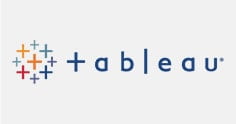
Business Analytics is the process by which businesses use statistical methods and technologies for analysing historical data in order to gain new insight and improve strategic decision-making.
Business analytics, a data management solution and business intelligence subset, refers to the use of methodologies such as data mining, predictive analytics, and statistical analysis in order to analyze and transform data into useful information, identify and anticipate trends and outcomes, and ultimately make smarter, data-driven business decisions.
The main components of a typical business analytics dashboard include
1. Data Aggregation
prior to analysis, data must first be gathered, organized, and filtered, either through volunteered data or transactional records
2. Data Mining
data mining for business analytics sorts through large datasets using databases, statistics, and machine learning to identify trends and establish relationships
3. Association and Sequence Identification
the identification of predictable actions that are performed in association with other actions or sequentially
4. Text Mining
explores and organizes large, unstructured text datasets for the purpose of qualitative and quantitative analysis
5. Forecasting
analyzes historical data from a specific period in order to make informed estimates that are predictive in determining future events or behaviours
6. Predictive Analytics
predictive business analytics uses a variety of statistical techniques to create predictive models, which extract information from datasets, identify patterns, and provide a predictive score for an array of organizational outcomes
7. Optimization
once trends have been identified and predictions have been made, businesses can engage simulation techniques to test out best-case scenarios
8. Data Visualization
provides visual representations such as charts and graphs for easy and quick data analysis
Get in touch
Transform your business to the next level.


